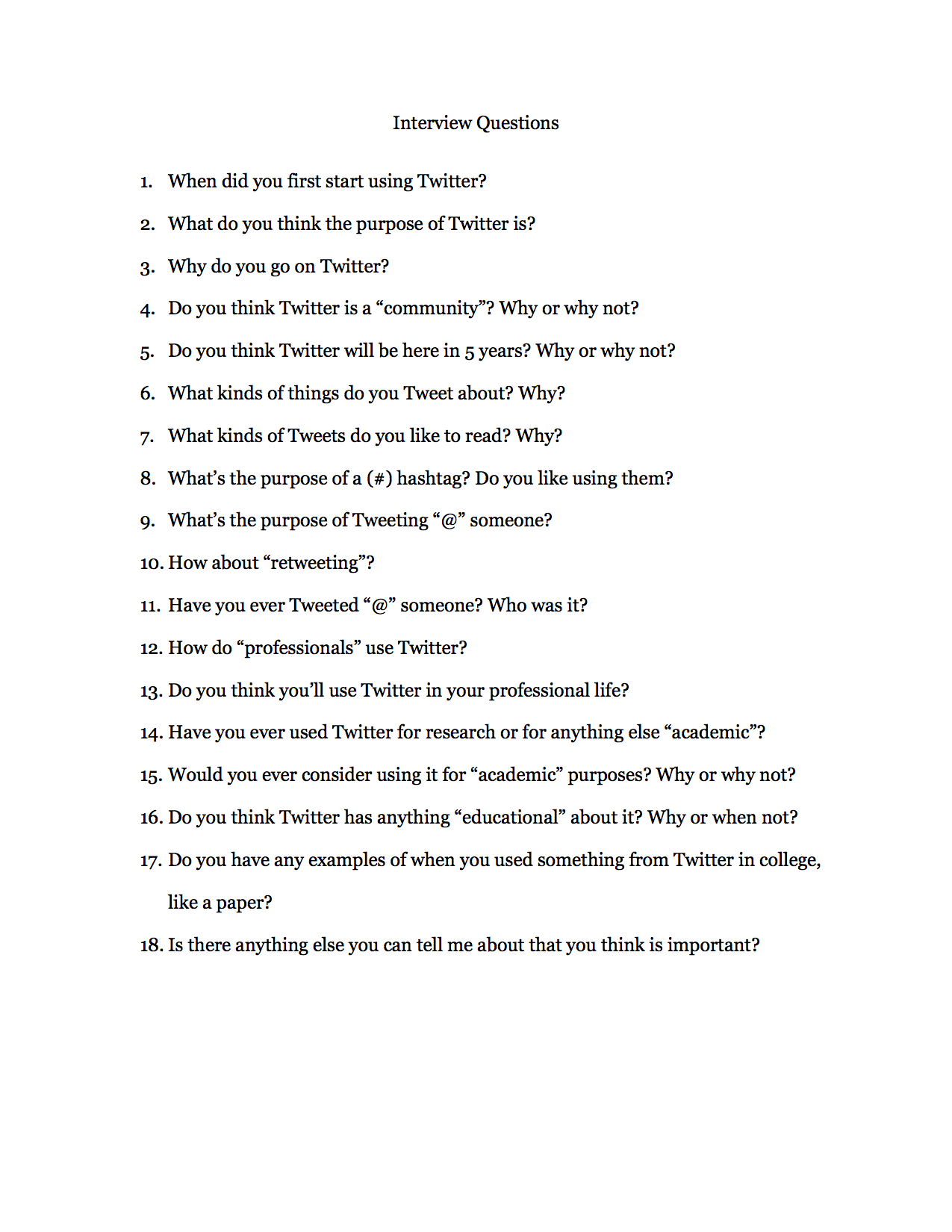Objectives and Methodology
Objectives and Guiding Questions
While much attention has been paid to increasing student engagement through the extension discussion about classroom topics into Twitter (Evans, 2013, Junco et al., 2010, Prestridge, 2014), one of the objectives here is to move towards an understanding of Twitter’s potential to mediate university and professional activity systems since, “[f]rom the point of view of many (perhaps most) students, the university is a place to expand their involvement, to a greater or lesser extent, with one or more of the activity systems that intersect with the university” (Russell, 1997, p. 529). But in order to do this, it is important to understand the level and kind of student interaction and participation on Twitter. This study will help outline the bridge that is already in place between the boundary activity systems so that educators can strengthen and support this process.
As I began this study, some of my guiding questions were as follows: Does Twitter help connect academic and societal activity systems? If it does help connect them, how does it do this? How do students interact with other users on Twitter and engage in discourse communities on the site? Does what they access through Twitter have any latent affect on their academics?
Answering some of these questions will give educators a better understanding of what is occurring on Twitter and how it is already affecting their classrooms. Additionally, if Twitter does help efficiently mediate activity systems, perhaps it will be one more reason why educators should strive to close the gap between Web 2.0 and academia while at the same time offering a distinctive way to integrate the technology. If the boundary interactions are already occurring, it may only be a process of incorporation and focus rather than a radical shift in praxis. With this in mind, I wanted to discover how engaged students already are with Twitter and if they have used it to conduct research or otherwise connect with professionals in their field.
Methods and Methodology
The study presented here was designed from a ground up rather than top down approach. In other words, instead of using Twitter in the classroom and examining how, and with what level of effectiveness, students use it, this study began with student’s latent use of Twitter and researched outwards. However, instead of looking solely at Twitter, this study uses Twitter as a lens to look towards the classroom and surrounding culture. By doing this, it is my hope that not only will the activity system of Twitter come into focus, but so will the bridge from Twitter to the university and professional activity systems. This will also allow educators to build on processes that are already occurring. Additionally, this ground-up approach increases the overall authenticity of the study by examining students’ use of the social media in the native digital setting as opposed to introducing Twitter to a classroom.
The data collection utilized both quantitative and qualitative measures through the use of a survey administered to select Journalism classes at a large urban university followed by personal interviews. The survey (See Figure 4) was administered to three Journalism classes from the university during the Spring 2013 and Fall 2013 semesters. From the three Journalism classes contacted, 25 students supplied surveys.

Figure 4. Survey
The questions were designed to find out general information about the experience students have with Twitter. Using a Likert Scale, the questions were coded on a scale of one to five, with one representing a low level of involvement and five representing a high level of involvement. Students who indicated that they were willing to participate in a follow-up interview were contacted via email. I developed eighteen interview questions regarding Twitter usage but allowed the conversation to move into other avenues as necessary (See Figure 5). Therefore, the qualitative interviews were informal because I hoped the students would express their own ideas and feelings rather than answer prescribed questions.

Figure 5. Interview questions
